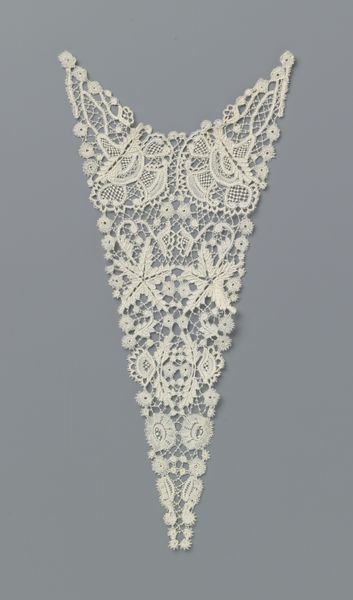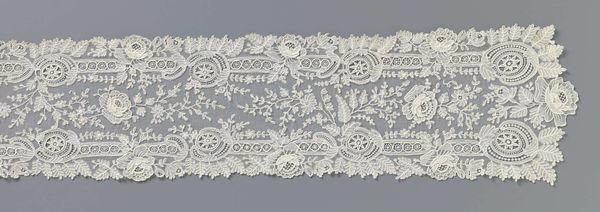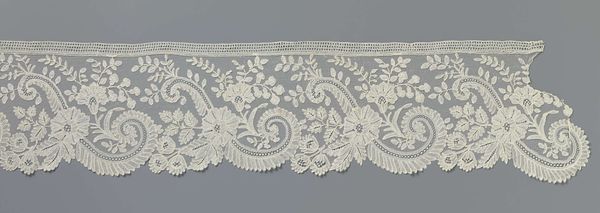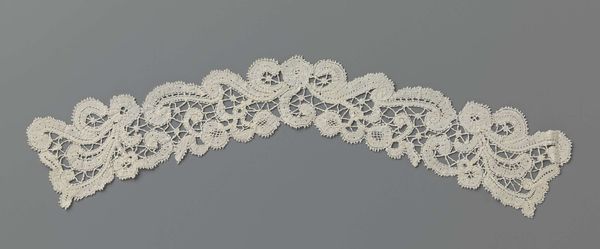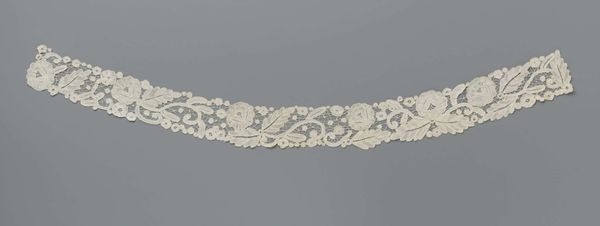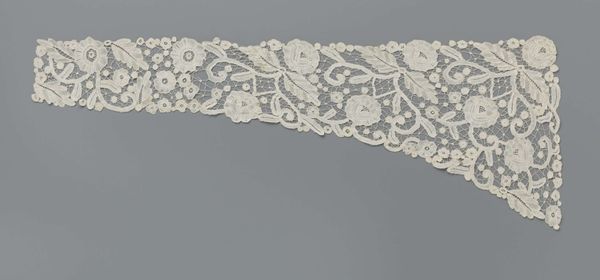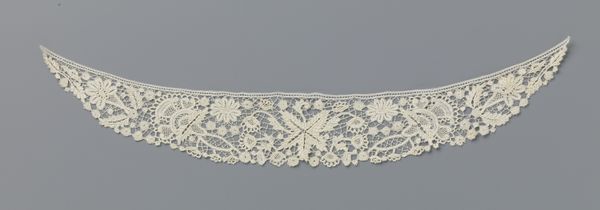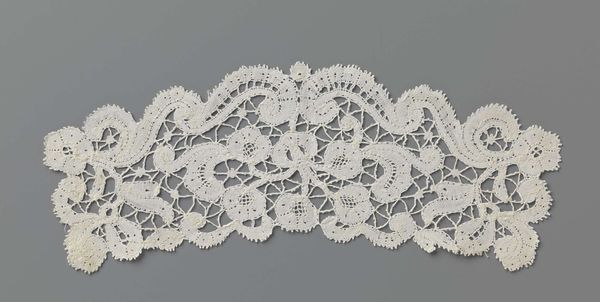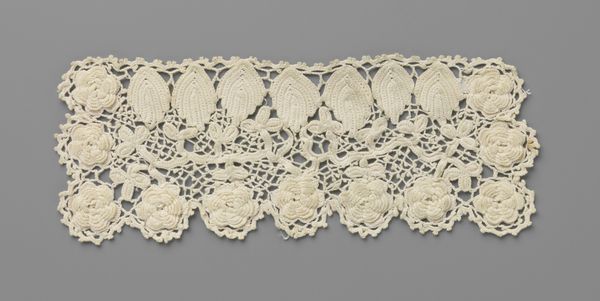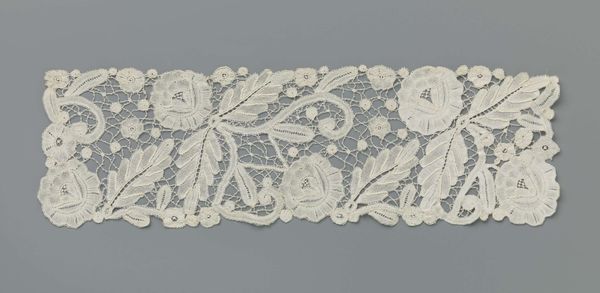
fibre-art, weaving, textile
#
fibre-art
#
art-nouveau
#
weaving
#
textile
#
decorative-art
#
imprinted textile
Dimensions: height 48 cm, width 21 cm
Copyright: Rijks Museum: Open Domain
Curator: Looking at this intricate bobbin lace collar piece, I’m immediately struck by its fragility and the intense labor involved. Editor: The repetitive looping of threads has an almost hypnotic effect, drawing the eye into a network of meticulously structured, symmetrical motifs. It feels... contained, refined. Curator: This work, known as "Vest van kloskant met hangende tros in symmetrische omlijsting," dates from around 1907 and falls squarely within the Art Nouveau movement. The emphasis is on organic, flowing forms rendered through geometric structures. Lace making itself became a signifier of status and specialized knowledge. Editor: Absolutely, the symmetrical omlijsting—or symmetrical enclosure—speaks to a deliberate crafting of social symbolism. The repeating teardrop shapes with clustered ‘tros’ or tufts suggest contained emotions, the artful ‘weeping’ becoming decorative. The immaculate execution reminds me of other works exploring repressed female agency. Curator: Indeed. Bobbin lace was strongly tied to the feminine realm. Passed down through generations, lace making acted as a way for women to connect. This collar would have functioned beyond simple ornamentation. Wearing lace acted as both performative craft and displayed generational knowledge. Editor: You’ve highlighted something interesting about performance and craft, which shifts our gaze towards production. The lace is bleached or made of the palest cotton – so pristine, yet delicate. In addition, I note the negative space formed within the textile’s grid acts in tension with the densly knotted rosettes to emphasize not just form, but how space functions around form. Curator: I agree; the strategic use of absence and presence to further enhance the material's effect adds another layer to consider. This artwork encapsulates craft's transformative power of simple materials towards expressions of complex socio-historical positions and self representation. Editor: This piece feels surprisingly resilient, an enduring expression carved into fiber. Thanks for shifting my gaze toward this piece's nuanced meanings; initially it felt quite ornamental.
Comments
No comments
Be the first to comment and join the conversation on the ultimate creative platform.
